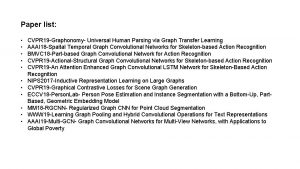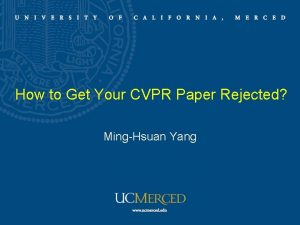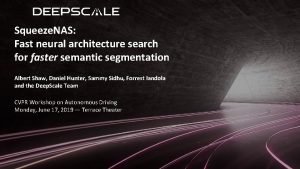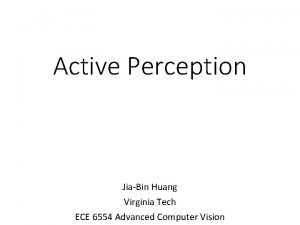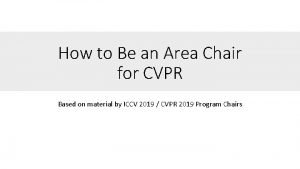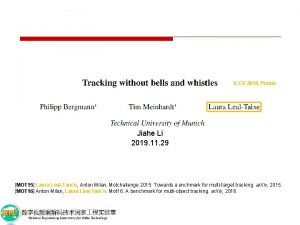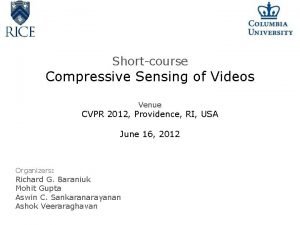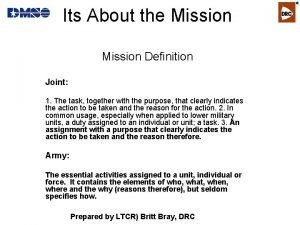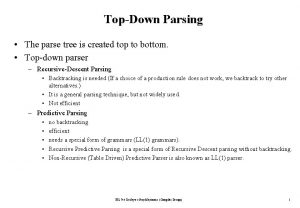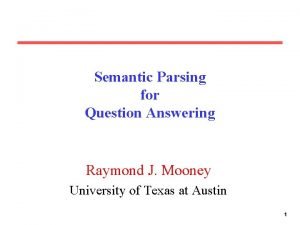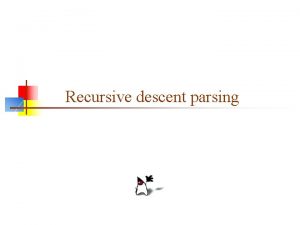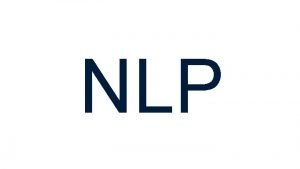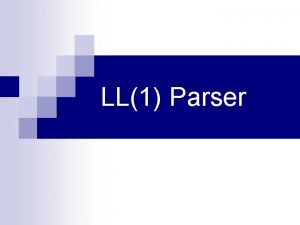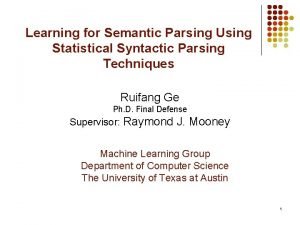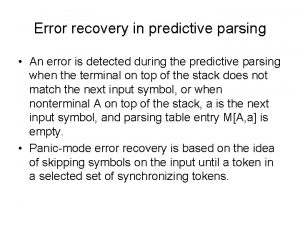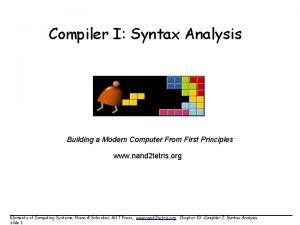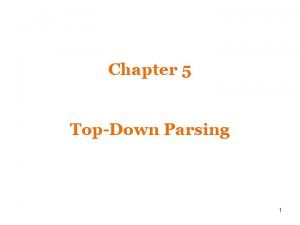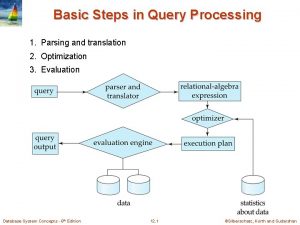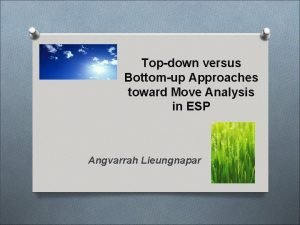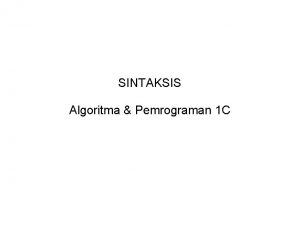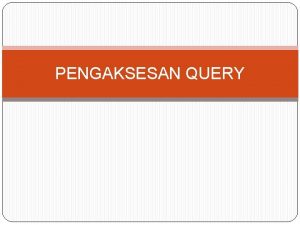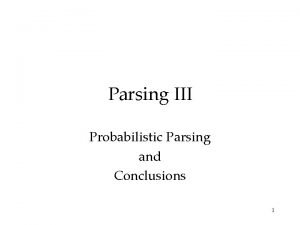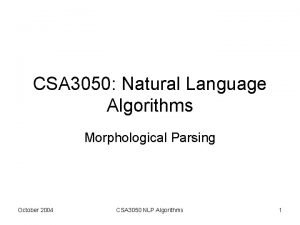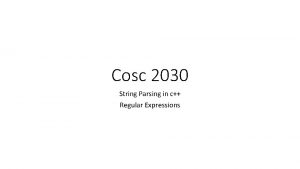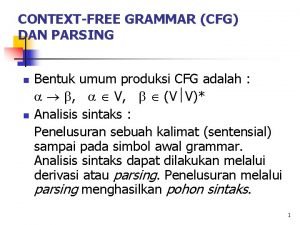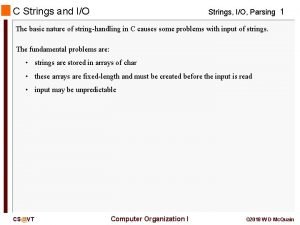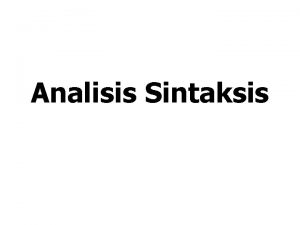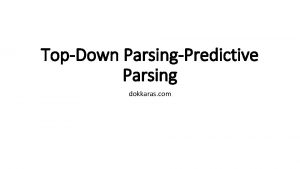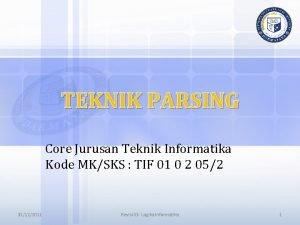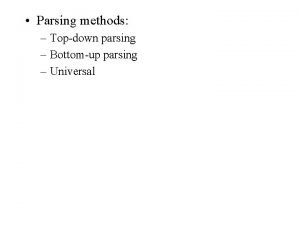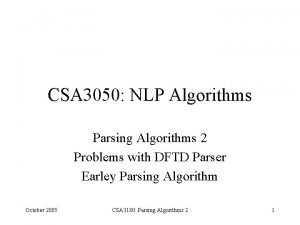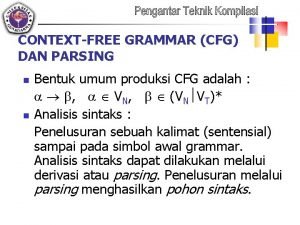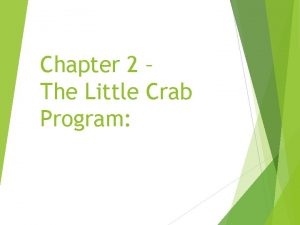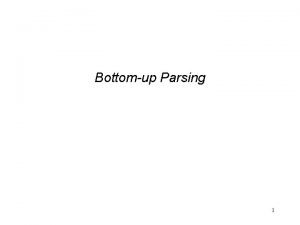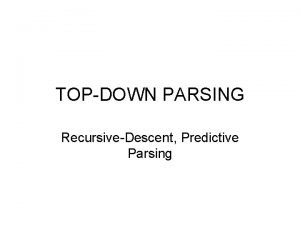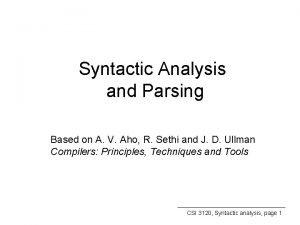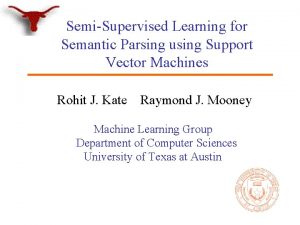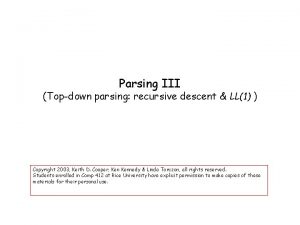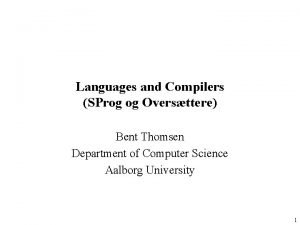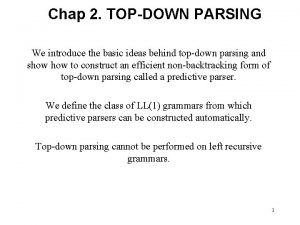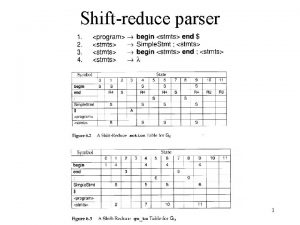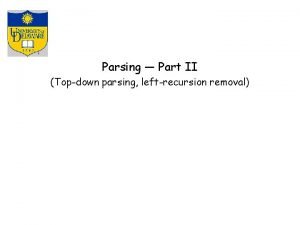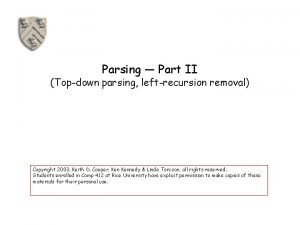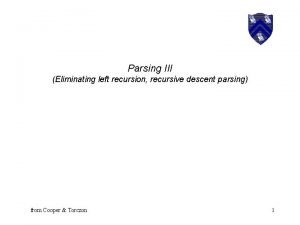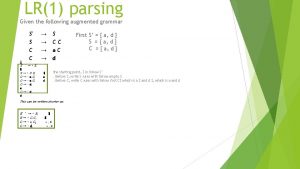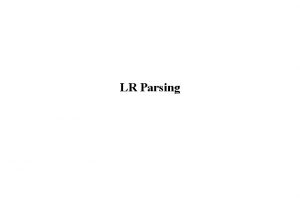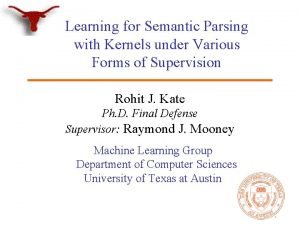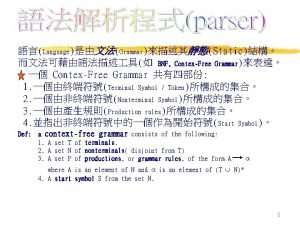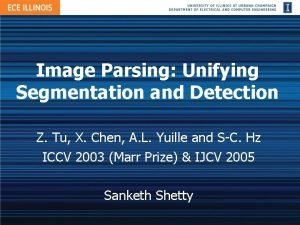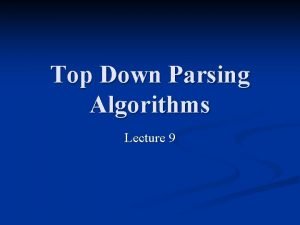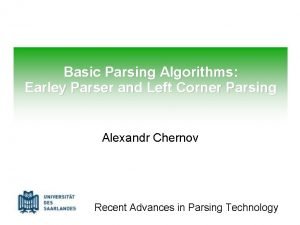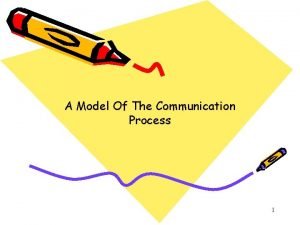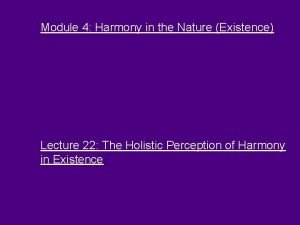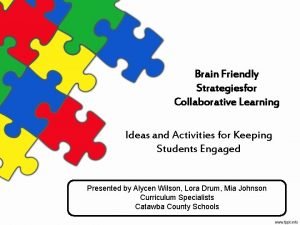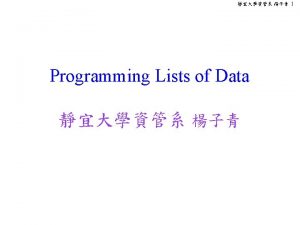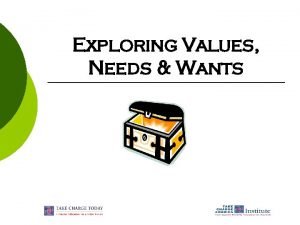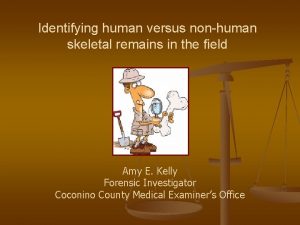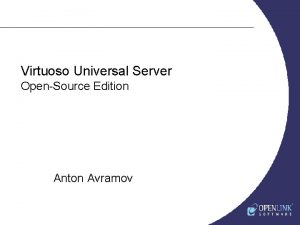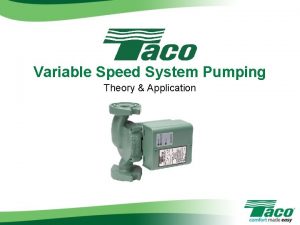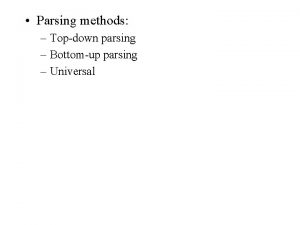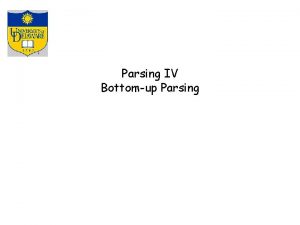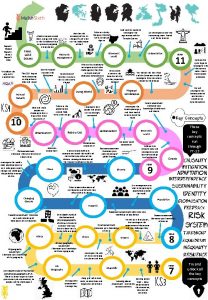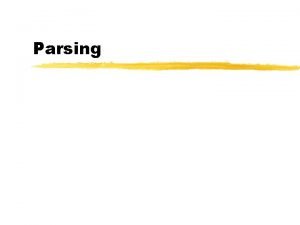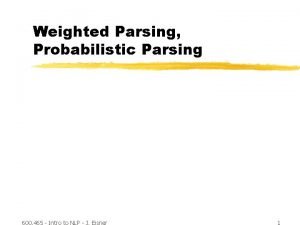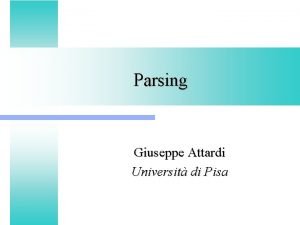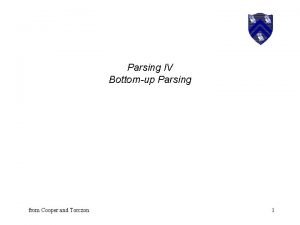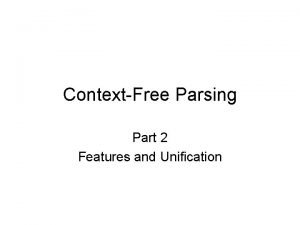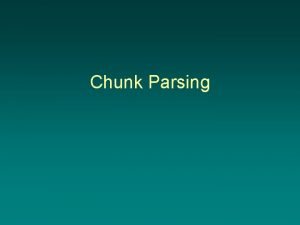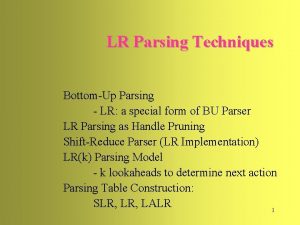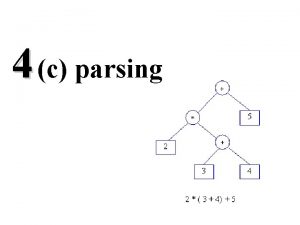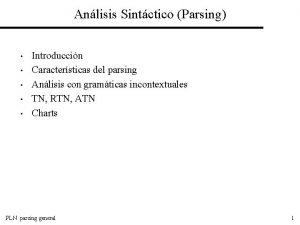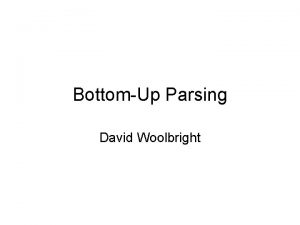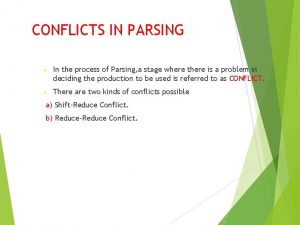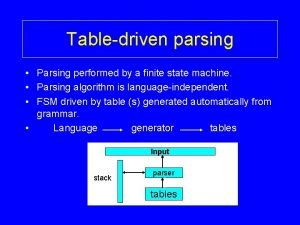Paper list CVPR 19 Graphonomy Universal Human Parsing









































































- Slides: 73

Paper list: • • • CVPR 19 -Graphonomy- Universal Human Parsing via Graph Transfer Learning AAAI 18 -Spaital Temporal Graph Convolutional Networks for Skeleton-based Action Recognition BMVC 18 -Part-based Graph Convolutional Network for Action Recognition CVPR 19 -Actional-Structural Graph Convolutional Networks for Skeleton-based Action Recognition CVPR 19 -An Attention Enhanced Graph Convolutional LSTM Network for Skeleton-Based Action Recognition NIPS 2017 -Inductive Representation Learning on Large Graphs CVPR 19 -Graphical Contrastive Losses for Scene Graph Generation ECCV 18 -Person. Lab- Person Pose Estimation and Instance Segmentation with a Bottom-Up, Part. Based, Geometric Embedding Model MM 18 -RGCNN- Regularized Graph CNN for Point Cloud Segmentation WWW 19 -Learning Graph Pooling and Hybrid Convolutional Operations for Text Representations AAAI 19 -Multi-GCN- Graph Convolutional Networks for Multi-View Networks, with Applications to Global Poverty

CVPR 2019

Human Parsing: huge different granularity and quantity of semantic labels ü A single universal human parsing model to tackle all levels of the task(Multi-task learning) ü Pretrain in one dataset, transfer to another dataset with graph transfer capability(Transfer learning)

Intra-Graph Reasoning 1. get local feature tensors from convolution layers 2. construct graph with external structure knowledge 3. feature maps -> graph node feature 4. employ graph convolution three times 5. re-project the graph nodes to image features

Intra-Graph Reasoning 1. get local feature tensors from convolution layers 2. construct graph with external structure knowledge 3. feature maps -> graph node feature 4. employ graph convolution three times 5. re-project the graph nodes to image features

Inter-Graph Transfer



AAAI 18



BMVC 18



Geometric features: relative coordinates Temporal features: temporal displacements

CVPR 19


Graph Convolutional Neural Network

Attention Enhanced Graph Convolutional LSTM

Attention Enhanced Graph Convolutional LSTM

AGC-LSTM Network Joints Feature Representation Temporal Hierarchical Architecture: average pooling in temporal domain to increase the temporal receptive field of the top AGC-LSTM layers Learning AGC-LSTM


CVPR 19


Spatio-Temporal GCN

Actional-Structural GCN

Actional-Structural GCN

Actional-Structural Graph Convolution Block


CVPR 1 9








NIPS 2017





ECCV 2018

Unified manner: • multi-person detection • 2 D pose estimation • instance segmentation TO DO: • identify person instance • localize facial and body keypoint • estimate instance segmentation mask


Keypoint detection Produce heatmaps (one channel per keypoint), offsets(two channels per keypoint for displacements in the horizontal and vertical directions) points from the image position x to the k-th keypoint of the closest person instance j

Hough voting

Grouping keypoints into person detection instances • Mid-range pairwise offsets • Recurrent offset refinement • Fast greedy decoding

Keypoint- and instance-level detection scoring

Instance-level person segmentation points from the image position x to the position of the k-th keypoint of the corresponding instance j



















HH 2019. 1. 5

Pipeline

Detecting graph elements n Ground Truth for vertices and edges n Stacked hourglass network n Two heatmaps from the final tensor

Connecting elements with associative embeddings n An edge points to a vertex by matching its output embedding as closely as possible: n The embedding vectors produced for each vertex are sufficiently different

Support for overlapping detections
 Cvpr paper list
Cvpr paper list Iccv rebuttal
Iccv rebuttal Cvpr
Cvpr Cvpr
Cvpr Cvpr 2012
Cvpr 2012 Cvpr borderline
Cvpr borderline Motchallenge format
Motchallenge format Cvpr 2012
Cvpr 2012 Universal joint task list
Universal joint task list Top-down parser
Top-down parser Semantic parsing
Semantic parsing Recursive descent parser
Recursive descent parser Parsing in nlp
Parsing in nlp Ll(1) parser solved example
Ll(1) parser solved example Parsing syntax
Parsing syntax Error recovery in predictive parsing
Error recovery in predictive parsing Syntax analysis
Syntax analysis Predictive parsing
Predictive parsing Steps of query processing
Steps of query processing Advantages of bottom up parsing
Advantages of bottom up parsing Yang memeriksa sintaks dan memeriksa relasi adalah
Yang memeriksa sintaks dan memeriksa relasi adalah Parsing adalah
Parsing adalah Probabilistic parsing
Probabilistic parsing End-to-end wireframe parsing
End-to-end wireframe parsing Morphological parsing in nlp
Morphological parsing in nlp Visual studio regular expression
Visual studio regular expression Cfg adalah
Cfg adalah Fgets strtok
Fgets strtok Parsing adalah
Parsing adalah Non recursive predictive parsing
Non recursive predictive parsing Mksks
Mksks Soa-ll1
Soa-ll1 Parsing algorithms in nlp
Parsing algorithms in nlp Contoh parsing
Contoh parsing Reached end of file while parsing greenfoot
Reached end of file while parsing greenfoot Top down parsing vs bottom up
Top down parsing vs bottom up Predictive parsing
Predictive parsing Lr(0) parsing table
Lr(0) parsing table Semantic parsing
Semantic parsing Predictive parsing
Predictive parsing Lr(0) parsing table
Lr(0) parsing table Predictive parsing
Predictive parsing Parsing
Parsing Left recursion
Left recursion For top down parsing left recursion removal is
For top down parsing left recursion removal is Left recursion and left factoring
Left recursion and left factoring Augmented grammer
Augmented grammer Which of these is also known as look-head lr parser?
Which of these is also known as look-head lr parser? Semantic parsing
Semantic parsing Bnf grammar
Bnf grammar Image parsing
Image parsing Top down parsing algorithm
Top down parsing algorithm Left corner parser
Left corner parser Universal ingredients of human communication
Universal ingredients of human communication Harmony in the nature and existence
Harmony in the nature and existence English general paper paper 2 comprehension
English general paper paper 2 comprehension Aice topics
Aice topics Paper plate awards ideas list
Paper plate awards ideas list Hrm exam questions
Hrm exam questions Axiomatic structure
Axiomatic structure Singly linked list vs doubly linked list
Singly linked list vs doubly linked list Difference between an array and a linked list
Difference between an array and a linked list List h shows account.
List h shows account. Perbedaan single linked list dan double linked list
Perbedaan single linked list dan double linked list Select list item list index too large
Select list item list index too large Basic human needs list
Basic human needs list List of human needs and wants
List of human needs and wants Human vs non human bones
Human vs non human bones Chapter 8 human needs and human development
Chapter 8 human needs and human development Chapter 8 human needs and human development
Chapter 8 human needs and human development Human development index definition ap human geography
Human development index definition ap human geography Human nouns
Human nouns Virtuoso universal server
Virtuoso universal server Universal hydronic formula
Universal hydronic formula
